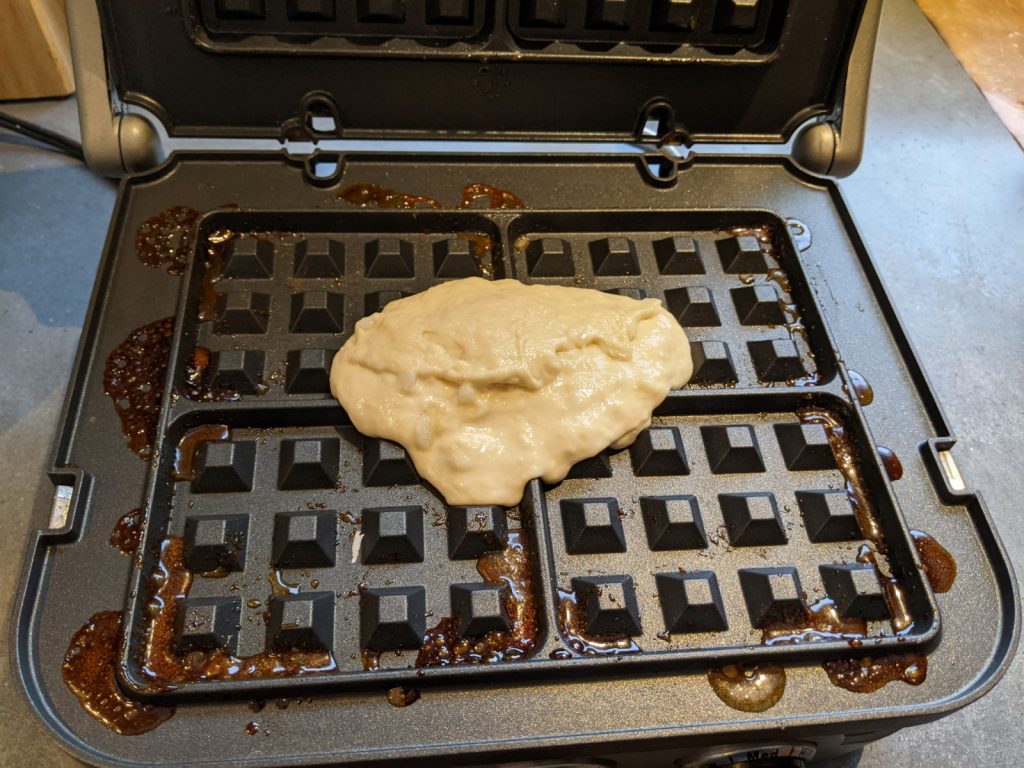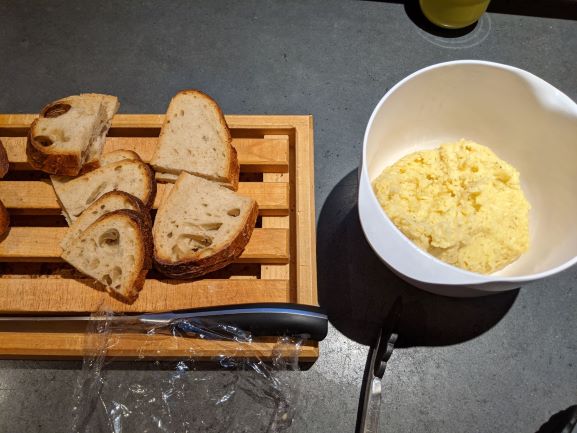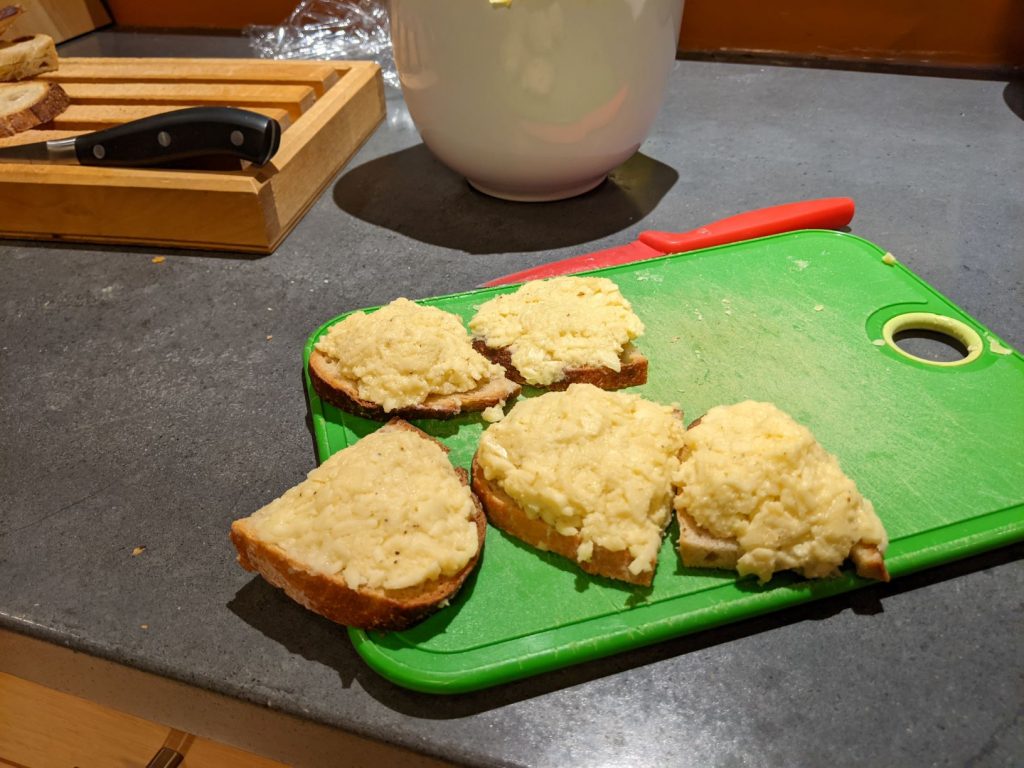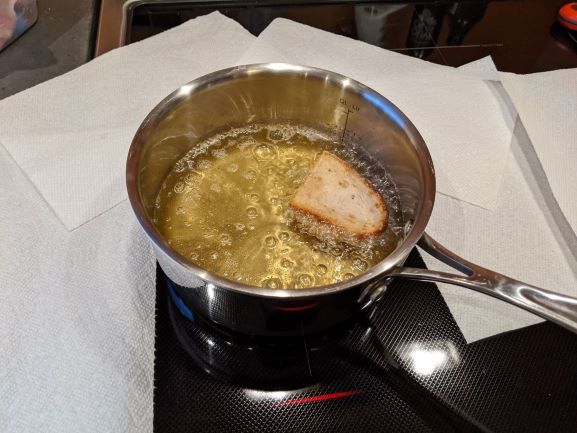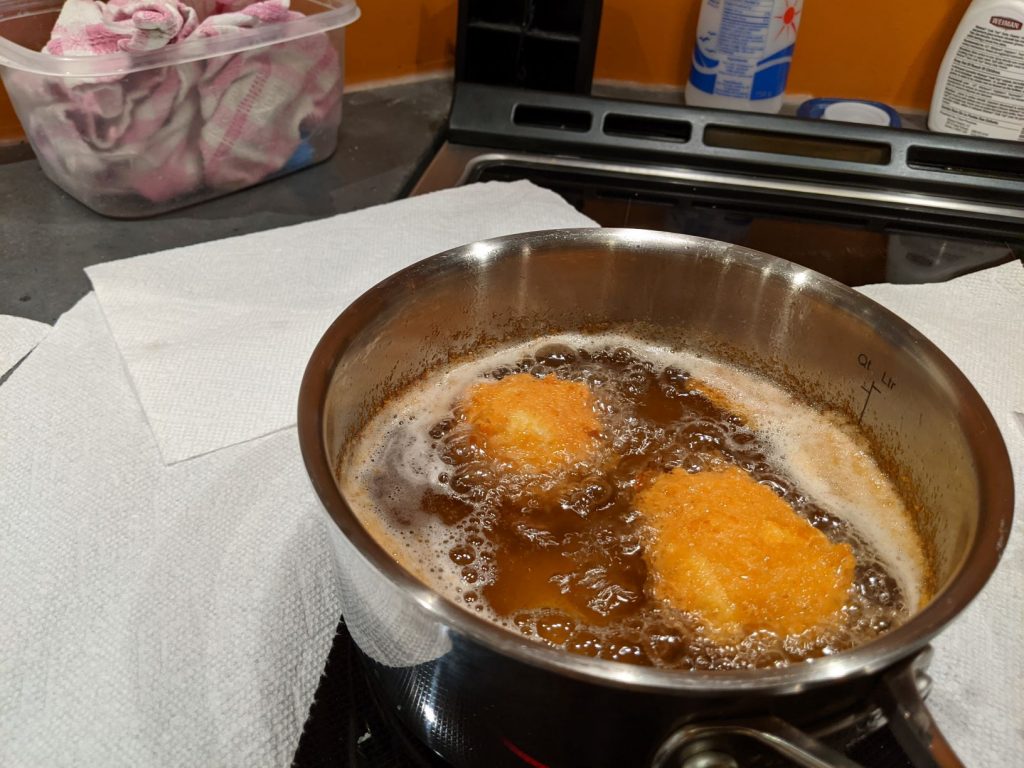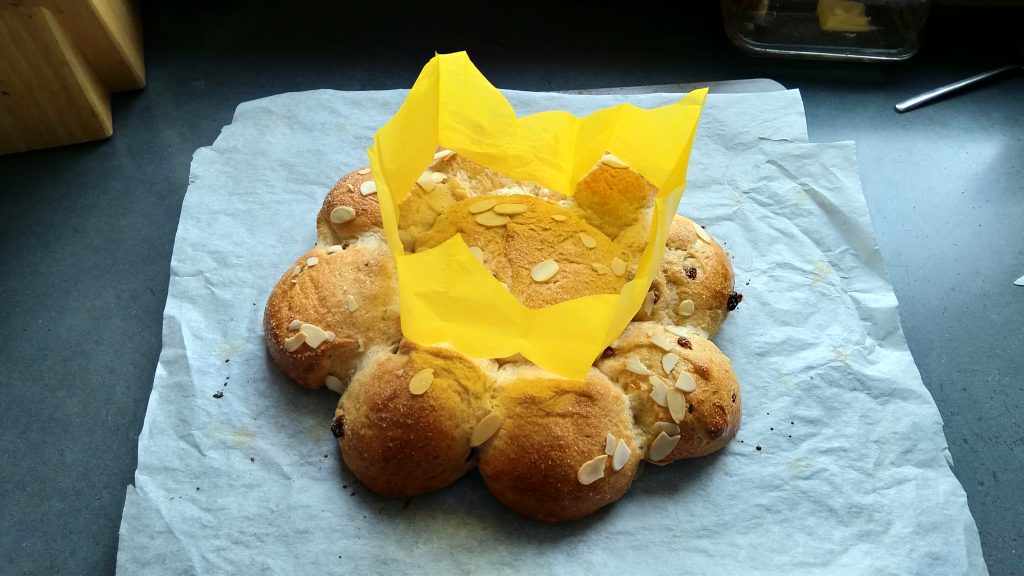
Detrempe:
- 500g all purpose flour (not bread flour!)
- 75g sugar
- 10g salt
- 225g active starter
- 300ml warm milk
Beurrage:
- 285g butter (room temp to start)
The recipe is timed to eat Sunday morning, but can be adjusted to Saturday morning by starting Thursday evening.
Friday morning (For Sunday morning croissant)
Feed starter to make 225g active starter by noon or so.
Friday at noon
Mix ingredients for detrempe in stand mixer for 4-5min. Just so it barely stays together (less gluten -> easier to roll).
Let it rise at warm temperature, ~4 hours (or whatever to double or more in size, could be 6-8 hours). Do a few stretch and folds at the beginning.
Use plastic wrap and an 8″x8″ cooking pan to make a flat square of butter (beurrage). It takes longer than you think.
Place detrempe and butter in fridge overnight.
Saturday morning:
Let the butter warm for 30min. Make sure the butter and dough have about the same consistency.
Roll dough out to a square 16 x 16 (double the butter). Place butter on the dough (rotated by 90 degrees) and fold the dough flaps over, like an envelope. Seal them well, pressing together. You now have an 8 x 8 dough with butter.
Roll the dough out to a rectangle, length 3 times the width (8 x 24). Fold one third over the middle, then the other third over that. (1st turn)
Let dough rest ~ 30min at room temperature (not too warm that butter melts, not too cold that butter shatters when rolled – should feel cool, not cold or warm). Refrigerate as needed. Can also let rest much longer than 30min (e.g. 8 hours, then leave it mostly in the fridge to ferment, take out ~30min before rolling so that butter warms up, but not too much). The dough should still spend some time (an hour here and there) out of the fridge to rise a bit if needed (it should puff up a little between folds).
Do a second turn, perpendicular to the first. Rest another30min (or more). Then do the third turn, perpendicular. Rest another 30 min or more , except if putting in the fridge over night.
A few options depending on the timing:
- Refrigerate dough overnight. Get up early, roll croissants, proof for 2-4+ hours, put in oven.
- Roll croissants, proof overnight on counter (covered with plastic). This till required a ~2 hour proof in the oven on proof setting in the morning.
Freeze the croissants after rolling them. Then, thaw/proof overnight on counter and a few more hours at warmer temperature if needed.
Should use water or egg wash during proofing to keep surface soft. You can’t easily move the croissants after proofing, so proof them on whatever is going in the oven!
Proofing should make the croissants puffy, jiggly, at least two times larger (but ideally more, see pics). Time will depend on starter and temperature. Can do the proofing in a warmed up oven (then, it’s closer to the 2hr mark).
Sunday morning:
Proof (if needed, with egg wash if just before baking)
Egg-wash (egg + milk).
15-20min at 400F (I lowered it to 380 after 12min, and baked for 18min total, but it will depend on the size of the croissants). They are cooked when they are a nice deep golden brown! Maybe earlier!
To fashion croissants, divide dough in 2. Roll out dough to ~3-5mm, in a rectangle of height ~25cm. Make isoceles triangles with base 10cm. Roll into croissants. Use scraps! Should make of order 10 croissants for each half of the dough (so 20 total, but freeze half, 10 is a lot).
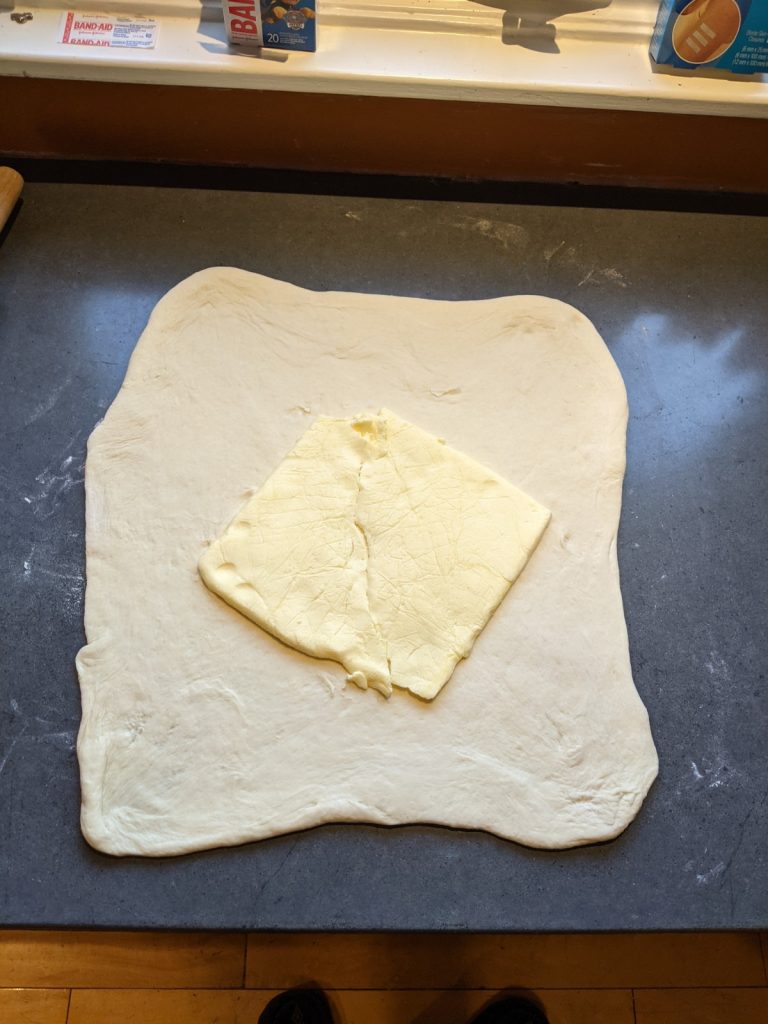
Even with the dough the wrong size it worked! (Better if dough is 2x butter) 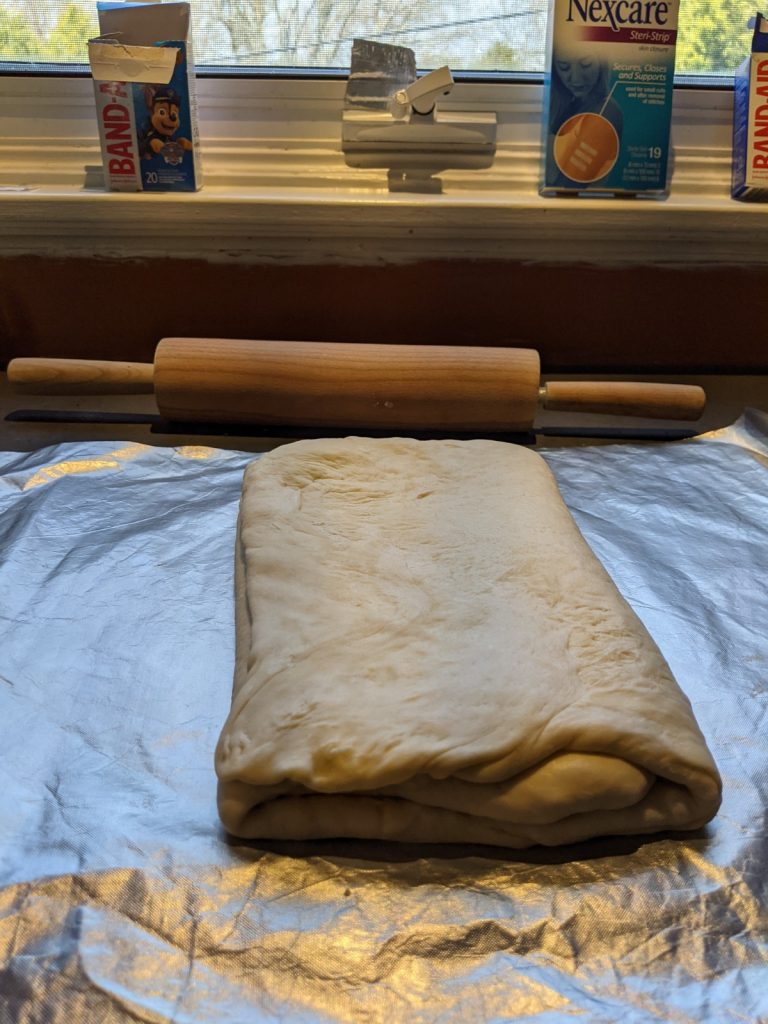
After one of the folds 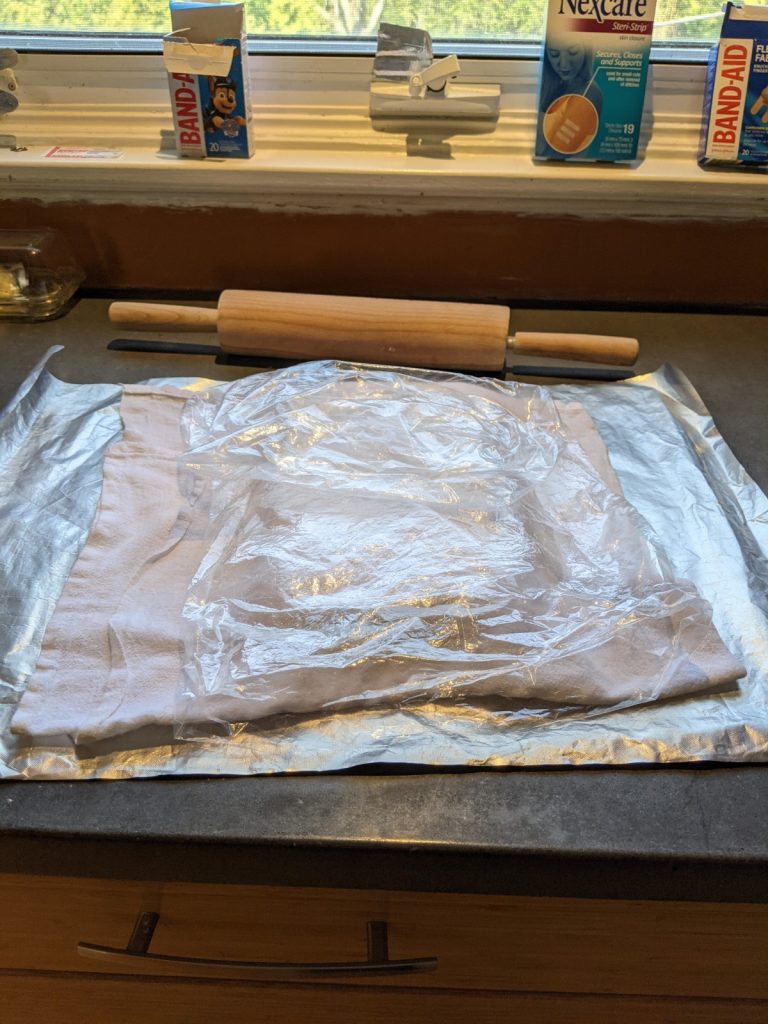
Resting on counter (sometimes in fridge) 
Right after rolling; they are tiny, but will grow a lot with proofing! 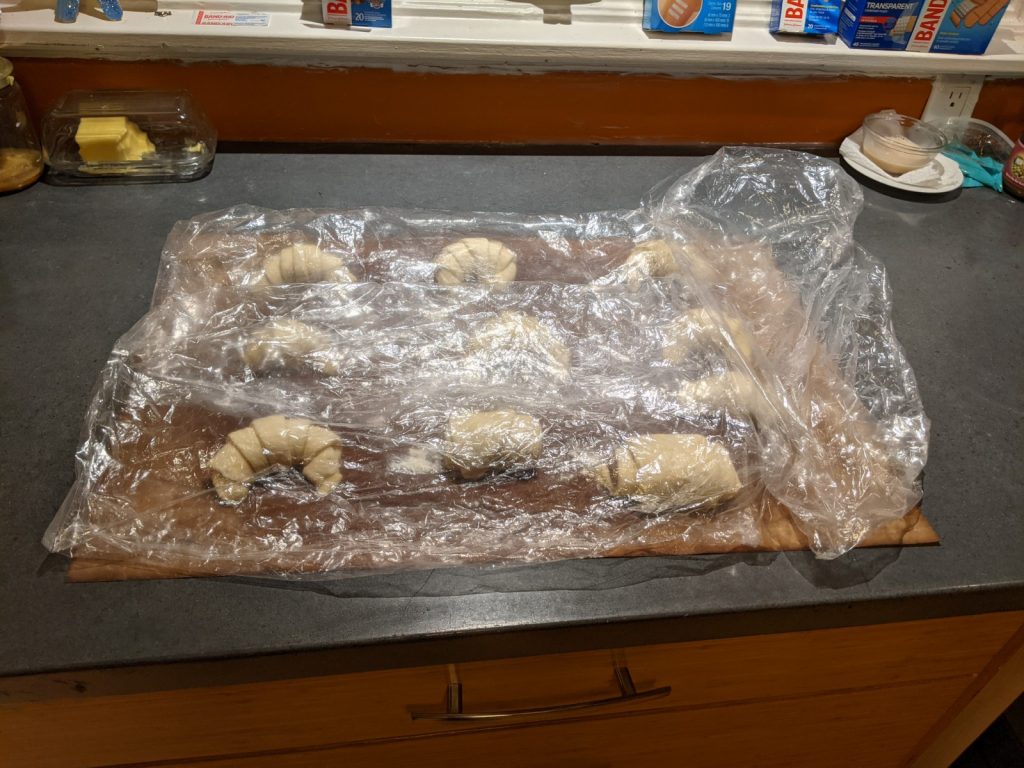
Brushed with water, proofing over night on counter 
After overnight proofing, not quite there 
After more proofing in warm oven (and egg wash) 
After cooking 
Cooling 
Before ingestion (followed by indigestion – they are light, but buttery, so not light!)
